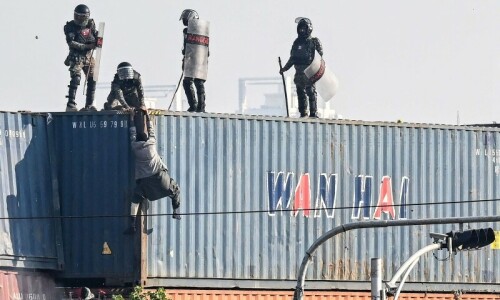ISLAMABAD: With a view to minimising the damages of floods in Jhelum city, a new protection bund has been proposed to be constructed in open river bed along the right bank of Jhelum River where certain depth of river flow remains persistent.
The project, costing Rs1.7 billion, will be one of the thirteen subprojects which have been taken up by the Punjab under ‘flood emergency reconstruction and resilience’ project.
The dialogue between the Punjab government and the Asian Development Bank (ADB) at various levels finally resulted in materializing financial and technical assistance from the ADB to the provincial government for all post-flood rehabilitation and reconstruction works.
The Punjab irrigation network consists of 24 main canals fed by 14 barrages and head works and nine major inter-river canals, irrigating more than 21 million acres of land.
Following successful completion of negotiations between the Punjab government and ADB, the project has been evaluated, and it has been proposed to construct a 6km long flood embankment starting from new G.T. Road bridge of Jhelum River to Tahlianwala village upstream Jhelum city.
After implementation of the project, agricultural lands, livestock, valuable public and private infrastructure and human lives would be saved against flood hazards.
In 2014, heavy monsoon rains in the catchment areas of the eastern rivers of Chenab, Ravi, Sutlej and Jhelum, resulted in flash floods in various districts of the province, damaging physical infrastructure besides destroying houses and agriculture.
The experience of exceptionally high flood of 2014 arose the need for providing safeguards to the local population, infrastructures, livestock, properties and human lives in particular against high flood, and a decision was made to construct a strong bund.
Jhelum is an important commercial and industrial city with profound population. Any flood in the Jhelum River can create catastrophic situation in the area, ADB evaluation report warns.
Whenever high flood in Jhelum River crosses the limit of 250,000 cusecs, the floodwater of Jhelum River enters into the city, causing flooding of the city area.
Published in Dawn, March 26th, 2017













































